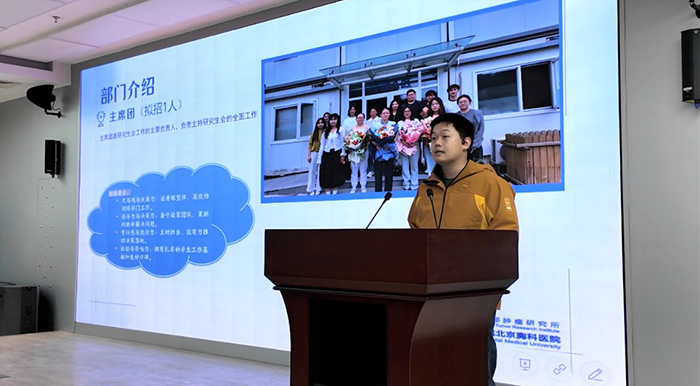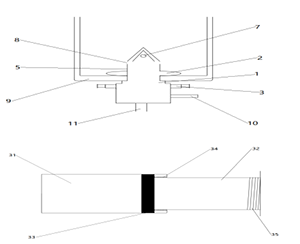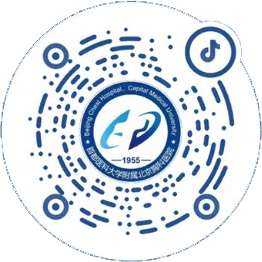2024年
No.4
PubMed
(tuberculosis[Title/Abstract]) OR (lung cancer[Title/Abstract])
Filters applied: from 2024/4/1 - 2024/4/30.
1. Cell Rep Med. 2024 Apr 16;5(4):101488. doi: 10.1016/j.xcrm.2024.101488. Epub 2024 Apr 1.
Intratumor microbiome-derived butyrate promotes lung cancer metastasis.
Ma Y(1), Chen H(2), Li H(2), Zheng M(3), Zuo X(4), Wang W(2), Wang S(2), Lu Y(5), Wang J(6), Li Y(7), Wang J(8), Qiu M(9).
Author information:
(1)Department of Thoracic Surgery, Thoracic Oncology Institute, Peking
University People's Hospital, Beijing 100044, China; Department of Thoracic
Surgery, Shanghai Pulmonary Hospital, Shanghai 200433, China.
(2)Department of Thoracic Surgery, Thoracic Oncology Institute, Peking
University People's Hospital, Beijing 100044, China; Institute of Advanced
Clinical Medicine, Peking University, Beijing 100191, China.
(3)Dongzhimen Hospital, Beijing University of Chinese Medicine, Beijing 100010, China; Department of Chinese Medicine, Peking University People's Hospital, Beijing 100044, China.
(4)Department of Science & Technology, Biobank of Jiangsu Cancer Hospital,
Jiangsu Cancer Hospital, Jiangsu Institute of Cancer Research, The Affiliated
Cancer Hospital of Nanjing Medical University, Nanjing 210009, China.
(5)Department of Genetics & Integrative Omics, State Key Laboratory of
Proteomics, National Center for Protein Sciences, Beijing Institute of Radiation Medicine, Beijing 100850, China.
Most recurrences of lung cancer (LC) occur within 3 years after surgery, but the underlying mechanism remains unclear. Here, we collect LC tissues with shorter (<3 recurrence="" and="" longer="">3 years, non-recurrence group) recurrence-free survival. By using 16S sequencing, we find that intratumor microbiome diversity is lower in the recurrence group and butyrate-producing bacteria are enriched in the recurrence group. The intratumor microbiome signature and circulating microbiome DNA can accurately predict LC recurrence. We prove that intratumor injection of butyrate-producing bacteria Roseburia can promote subcutaneous tumor growth. Mechanistically, bacteria-derived butyrate promotes LC metastasis by increasing expression of H19 in tumor cells through inhibiting HDAC2 and increasing H3K27 acetylation at the H19 promoter and inducing M2 macrophage polarization. Depletion of macrophages partially abolishes the metastasis-promoting effect of butyrate. Our results provide evidence for the cross-talk between the intratumor microbiome and LC metastasis and suggest the potential prognostic and therapeutic value of the intratumor
microbiome.
Copyright © 2024 The Author(s). Published by Elsevier Inc. All rights reserved.
DOI: 10.1016/j.xcrm.2024.101488
PMCID: PMC11031379
PMID: 38565146 [Indexed for MEDLINE]
2. Cancer Treat Rev. 2024 Apr 3;127:102733. doi: 10.1016/j.ctrv.2024.102733. Online ahead of print.
NTRK gene fusion testing and management in lung cancer.
Repetto M(1), Chiara Garassino M(2), Loong HH(3), Lopez-Rios F(4), Mok T(3), Peters S(5), Planchard D(6), Popat S(7), Rudzinski ER(8), Drilon A(9), Zhou C(10).
Author information:
(1)Memorial Sloan Kettering Cancer Center, New York, NY, USA; Weill Cornell Medical College, New York, NY, USA. Electronic address: repettom@mskcc.org.
(2)Department of Medicine, Thoracic Oncology Program, The University of Chicago, Chicago, IL, USA.
(3)The Chinese University of Hong Kong, Hong Kong, China.
(4)Hospital Universitario 12 de Octubre, Madrid, Spain.
Neurotrophic tyrosine receptor kinase (NTRK) gene fusions are recurrent oncogenic drivers found in a variety of solid tumours, including lung cancer. Several tropomyosin receptor kinase (TRK) inhibitors have been developed to treat tumours with NTRK gene fusions. Larotrectinib and entrectinib are
first-generation TRK inhibitors that have demonstrated efficacy in patients with TRK fusion lung cancers. Genomic testing is recommended for all patients with metastatic non-small cell lung cancer for optimal drug therapy selection. Multiple testing methods can be employed to identify NTRK gene fusions in the clinic and each has its own advantages and limitations. Among these assays, RNA-based next-generation sequencing (NGS) can be considered a gold standard for detecting NTRK gene fusions; however, several alternatives with minimally acceptable sensitivity and specificity are also available in areas where widespread access to NGS is unfeasible. This review highlights the importance of testing for NTRK gene fusions in lung cancer, ideally using the gold-standard method of RNA-based NGS, the various assays that are available, and treatment algorithms for patients.
Copyright © 2024 The Authors. Published by Elsevier Ltd.. All rights reserved.
DOI: 10.1016/j.ctrv.2024.102733
PMID: 38733648
3. J Thorac Oncol. 2024 Apr;19(4):589-600. doi: 10.1016/j.jtho.2023.11.015. Epub 2023 Nov 19.
Incidentally Detected Lung Cancer in Persons Too Young or Too Old for Lung
Cancer Screening in a Mississippi Delta Cohort.
Liao W(1), Fehnel C(1), Goss J(1), Shepherd CJ(1), Qureshi T(1), Matthews AT(1), Ray MA(2), Faris NR(1), Pinsky PF(3), Smeltzer MP(2), Osarogiagbon RU(4).
Author information:
(1)Thoracic Oncology Research Group, Baptist Cancer Center, Memphis, Tennessee.
(2)School of Public Health, University of Memphis, Memphis, Tennessee.
(3)Division of Cancer Prevention, National Cancer Institute, National Institutes of Health, Bethesda, Maryland.
(4)Thoracic Oncology Research Group, Baptist Cancer Center, Memphis, Tennessee.
Electronic address: rosarogi@bmhcc.org.
INTRODUCTION: Lung cancer risk in screening age-ineligible persons with
incidentally detected lung nodules is poorly characterized. We evaluated lung
cancer risk in two age-ineligible Lung Nodule Program (LNP) cohorts.
METHODS: Prospective observational study comparing 2-year cumulative lung cancer diagnosis risk, lung cancer characteristics, and overall survival between low-dose computed tomography (LDCT) screening participants aged 50 to 80 years and LNP participants aged 35 to younger than 50 years (young) and older than 80 years (elderly).
RESULTS: From 2015 to 2022, lung cancer was diagnosed in 329 (3.43%), 39 (1.07%), and 172 (6.87%) LDCT, young, and elderly LNP patients, respectively. The 2-year cumulative incidence was 3.0% (95% confidence intervals [CI]: 2.6%-3.4%) versus 0.79% (CI: 0.54%-1.1%) versus 6.5% (CI: 5.5%-7.6%), respectively, but lung cancer diagnosis risk was similar between young LNP and Lung CT Screening Reporting and Data System (Lung-RADS) 1 (adjusted hazard ratio [aHR] = 0.88 [CI: 0.50-1.56]) and Lung-RADS 2 (aHR = 1.0 [0.58-1.72]). Elderly LNP risk was greater than Lung-RADS 3 (aHR = 2.34 [CI: 1.50-3.65]), but less than 4 (aHR = 0.28 [CI: 0.22-0.35]). Lung cancer was stage I or II in 62.92% of LDCT versus 33.33% of young (p = 0.0003) and 48.26% of elderly (p = 0.0004) LNP cohorts; 16.72%, 41.03%, and 29.65%, respectively, were diagnosed at stage IV. The aggregate 5-year overall survival rates were 57% (CI: 48-67), 55% (CI: 39-79), and 24% (CI: 15-40) (log-rank p < 0.0001). Results were similar after excluding persons with any history of cancer.
CONCLUSIONS: LNP modestly benefited persons too young or old for screening. Differences in clinical characteristics and outcomes suggest differences in biological characteristics of lung cancer in these three patient cohorts.
Copyright © 2023. Published by Elsevier Inc.
DOI: 10.1016/j.jtho.2023.11.015
PMID: 37984678 [Indexed for MEDLINE]
4. Cancer Discov. 2024 Apr 6. doi: 10.1158/2159-8290.CD-23-1380. Online ahead of print.
Spatial Architecture of Myeloid and T Cells Orchestrates Immune Evasion and Clinical Outcome in Lung Cancer.
Enfield KSS(1), Colliver E(1), Lee CSY(1), Magness A(1), Moore DA(2), Sivakumar M(3), Grigoriadis K(1), Pich O(1), Karasaki T(1), Hobson PS(1), Levi D(1), Veeriah S(4), Puttick C(1), Nye EL(1), Green M(1), Dijkstra KK(5), Shimato M(1), Akarca AU(3), Marafioti T(6), Salgado R(7), Hackshaw A(3), Consortium T(3), Jamal-Hanjani M(3), van Maldegem F(8), McGranahan N(9), Glass B(10), Pulaski H(10), Walk E(11), Reading JL(12), Quezada SA(12), Hiley CT(3), Downward J(1), Sahai E(13), Swanton C(1), Angelova M(1).
Author information:
(1)The Francis Crick Institute, London, United Kingdom.
(2)UCL Cancer Centre, London, United Kingdom.
(3)University College London, London, United Kingdom.
(4)University College London Cancer Institute, United Kingdom.
(5)Netherlands Cancer Institute, Amsterdam, Netherlands.
(6)University College Hospitals London, London, United Kingdom.
Understanding the role of the tumour microenvironment (TME) in lung cancer is critical to improving patient outcome. We identified four histology-independent archetype TMEs in treatment-naive early-stage lung cancer using imaging mass cytometry in the TRACERx study (n=81 patients/198 samples/2.3million cells). In immune-hot adenocarcinomas, spatial niches of T cells and macrophages increased with clonal neoantigen burden, whereas such an increase was observed for niches of plasma and B cells in immune excluded squamous cell carcinomas (LUSC). Immune-low TMEs were associated with fibroblast barriers to immune infiltration. The fourth archetype, characterised by sparse lymphocytes and high tumour-associated neutrophil (TAN) infiltration, had tumour cells spatially separated from vasculature and exhibited low spatial intratumour heterogeneity. TAN-High LUSC had frequent PIK3CA mutations. TAN-High tumours harboured recently expanded and metastasis-seeding subclones and had a shorter disease-free survival independent of stage. These findings delineate genomic, immune and physical barriers to immune surveillance and implicate neutrophil-rich TMEs in metastasis.
DOI: 10.1158/2159-8290.CD-23-1380
PMID: 38581685
5. Cell Rep Med. 2024 Apr 16;5(4):101499. doi: 10.1016/j.xcrm.2024.101499. Epub 2024 Apr 5.
Circulating microbiome DNA as biomarkers for early diagnosis and recurrence of lung cancer.
Chen H(1), Ma Y(2), Xu J(3), Wang W(1), Lu H(4), Quan C(4), Yang F(1), Lu Y(5), Wu H(6), Qiu M(7).
Author information:
(1)Department of Thoracic Surgery, Peking University People's Hospital, Beijing 100044, China; Thoracic Oncology Institute, Peking University People's Hospital, Beijing 100044, China; Institute of Advanced Clinical Medicine, Peking University, Beijing 100191, China.
(2)Department of Thoracic Surgery, Shanghai Pulmonary Hospital, Tongji
University School of Medicine, Shanghai 200433, China.
(3)Department of Hematology and Oncology, Geriatric Hospital of Nanjing Medical University, Nanjing 210009, China.
(4)Beijing Institute of Radiation Medicine, State Key Laboratory of Proteomics, Beijing 100850, China.
(5)Beijing Institute of Radiation Medicine, State Key Laboratory of Proteomics, Beijing 100850, China. Electronic address: ylu.phd@gmail.com.
(6)Department of Thoracic Surgery, Shenzhen Second People's Hospital, Shenzhen 518035, China. Electronic address: haowudr@hotmail.com.
Lung cancer mortality is exacerbated by late-stage diagnosis. Emerging evidence indicates the potential clinical significance of distinct microbial signatures as diagnostic and prognostic biomarkers across various cancers. However, circulating microbiome DNA (cmDNA) profiles are underexplored in lung cancer (LC). Here, whole-genome sequencing is performed on plasma of LC patients and healthy controls (HCs). Differentially enriched microbial species are identified between LC and HC. A diagnostic model is developed, which has a high sensitivity of 87.7% and achieves an AUC of 93.2% in the independent validation dataset. Crucially, this model demonstrates the capability to detect early-stage LC, achieving a sensitivity of 86.5% for stage I and 87.1% for tumors<1 cm. In addition, we construct a cmDNA model for recurrence, which precisely predicts LC recurrence after surgery. Overall, this study highlights the significant alterations of cmDNA profiles in LC, indicating its potential as biomarkers for early diagnosis and recurrence.
Copyright © 2024 The Authors. Published by Elsevier Inc. All rights reserved.
DOI: 10.1016/j.xcrm.2024.101499
PMCID: PMC11031421
PMID: 38582085 [Indexed for MEDLINE]
Conflict of interest statement: Declaration of interests The authors declare no
competing interests.
6. J Thorac Oncol. 2024 Apr 1:S1556-0864(24)00129-1. doi:
10.1016/j.jtho.2024.03.021. Online ahead of print.
The International Association for the Study of Lung Cancer Lung Cancer Staging
Project: Proposals for Revision of the Classification of Residual Tumor After
Resection for the Forthcoming (Ninth) Edition of the TNM Classification of Lung Cancer.
Detterbeck FC(1), Ostrowski M(2), Hoffmann H(3), Rami-Porta R(4), Osarogiagbon RU(5), Donnington J(6), Infante M(7), Marino M(8), Marom EM(9), Nakajima J(10), Nicholson AG(11), van Schil P(12), Travis WD(13), Tsao MS(14), Edwards JG(15), Asamura H(16); Members of the Staging and Prognostic Factors Committee and Advisory Boards.
Author information:
(1)Department of Surgery, Yale University School of Medicine, New Haven,
Connecticut. Electronic address: frank.detterbeck@yale.edu.
(2)Department of Thoracic Surgery, Medical University of Gdansk, Gdansk, Poland.
(3)Division of Thoracic Surgery, Department of Surgery, Klinikum Rechts der
Isar, Technical University of Munich, Munich, Germany.
(4)Department of Thoracic Surgery, Hospital Universitari Mutua Terrassa,
University of Barcelona, Terrassa, Barcelona, Spain.
(5)Oncology Research Group, Multidisciplinary Thoracic Oncology Program, Baptist Cancer Center, Memphis, Tennessee.
INTRODUCTION: The goal of surgical resection is to completely remove a cancer; it is useful to have a system to describe how well this was accomplished. This is captured by the residual tumor (R) classification, which is separate from the TNM classification that describes the anatomic extent of a cancer independent of treatment. The traditional R-classification designates as R0 a complete resection, as R1 a macroscopically complete resection but with microscopic tumor at the surgical margin, and as R2 a resection that leaves gross tumor behind. For lung cancer, an additional category encompasses situations in which the presence of residual tumor is uncertain.
METHODS: This paper represents a comprehensive review of evidence regarding these R categories and the descriptors thereof, focusing on studies published after the year 2000 and with adjustment for potential confounders.
RESULTS: Consistent discrimination between complete, uncertain, and incomplete resection is revealed with respect to overall survival. Evidence regarding specific descriptors is generally somewhat limited and only partially consistent; nevertheless, the data suggest retaining all descriptors but with clarifications to address ambiguities.
CONCLUSION: On the basis of this review, the R-classification for the ninth
edition of stage classification of lung cancer is proposed to retain the same overall framework and descriptors, with more precise definitions of descriptors. These refinements should facilitate application and further research.
Copyright © 2024 International Association for the Study of Lung Cancer.
Published by Elsevier Inc. All rights reserved.
DOI: 10.1016/j.jtho.2024.03.021
PMID: 38569931
7. Adv Sci (Weinh). 2024 Apr;11(15):e2307122. doi: 10.1002/advs.202307122. Epub 2024 Feb 11.
RBMS1 Coordinates with the m(6)A Reader YTHDF1 to Promote NSCLC Metastasis through Stimulating S100P Translation.
Sun Y(1), Chen D(2), Sun S(3), Ren M(1), Zhou L(1), Chen C(1), Zhao J(4), Wei H(5), Zhao Q(1), Qi Y(4), Zhang J(4), Zhang G(6), Liu H(4), Yang Q(4), Liu Q(4), Wang Y(1), Zhang W(4).
Author information:
(1)Sino-US Research Center for Cancer Translational Medicine of the Second Affiliated Hospital of Dalian Medical University & Institute of Cancer Stem Cell, Dalian Medical University, Dalian, 116023, China.
(2)Department of Pathology, the First Affiliated Hospital of Dalian Medical University, Dalian Medical University, Dalian, 116011, China.
(3)Department of Oncology & Sino-US Research Center for Cancer Translational Medicine, the Second Affiliated Hospital, Dalian Medical University, Dalian, 116023, China.
(4)Institute of Cancer Stem Cell, Dalian Medical University, Dalian, 116044,
China.
(5)CAS Key Laboratory of Computational Biology, Bio-Med Big Data Center,
Shanghai Institute of Nutrition and Health, University of Chinese Academy of Sciences, Chinese Academy of Sciences, Shanghai, 200031, China.
Metastasis is the leading cause for the high mortality of lung cancer, however,
effective anti-metastatic drugs are still limited. Here it is reported that the
RNA-binding protein RBMS1 is positively associated with increased lymph node metastasis in non-small cell lung cancer (NSCLC). Depletion of RBMS1 suppresses cancer cell migration and invasion in vitro and inhibits cancer cell metastasis in vivo. Mechanistically, RBMS1 interacts with YTHDF1 to promote the translation of S100P, thereby accelerating NSCLC cell metastasis. The RRM2 motif of RBMS1 and the YTH domain of YTHDF1 are required for the binding of RBMS1 and YTHDF1. RBMS1 ablation inhibits the translation of S100P and suppresses tumor metastasis. Targeting RBMS1 with NTP, a small molecular chemical inhibitor of RBMS1, attenuates tumor metastasis in a mouse lung metastasis model. Correlation studies in lung cancer patients further validate the clinical relevance of the findings. Collectively, the study provides insight into the molecular mechanism by which RBMS1 promotes NSCLC metastasis and offers a therapeutic strategy for metastatic NSCLC.
© 2024 The Authors. Advanced Science published by Wiley‐VCH GmbH.
DOI: 10.1002/advs.202307122
PMCID: PMC11022699
PMID: 38342601 [Indexed for MEDLINE]
Conflict of interest statement: The authors declare no conflict of interest.
8. IEEE Trans Pattern Anal Mach Intell. 2024 Apr;46(4):2316-2332. doi:
10.1109/TPAMI.2023.3330825. Epub 2024 Mar 6.
Revisiting Computer-Aided Tuberculosis Diagnosis.
Liu Y, Wu YH, Zhang SC, Liu L, Wu M, Cheng MM.
Tuberculosis (TB) is a major global health threat, causing millions of deaths
annually. Although early diagnosis and treatment can greatly improve the chances of survival, it remains a major challenge, especially in developing countries. Recently, computer-aided tuberculosis diagnosis (CTD) using deep learning has shown promise, but progress is hindered by limited training data. To address this, we establish a large-scale dataset, namely the Tuberculosis X-ray (TBX11 K) dataset, which contains 11 200 chest X-ray (CXR) images with corresponding bounding box annotations for TB areas. This dataset enables the training of sophisticated detectors for high-quality CTD. Furthermore, we propose a strong baseline, SymFormer, for simultaneous CXR image classification and TB infection area detection. SymFormer incorporates Symmetric Search Attention (SymAttention) to tackle the bilateral symmetry property of CXR images for learning discriminative features. Since CXR images may not strictly adhere to the bilateral symmetry property, we also propose Symmetric Positional Encoding (SPE) to facilitate SymAttention through feature recalibration. To promote future research on CTD, we build a benchmark by introducing evaluation metrics, evaluating baseline models reformed from existing detectors, and running an online challenge. Experiments show that SymFormer achieves state-of-the-art performance on the TBX11 K dataset.
DOI: 10.1109/TPAMI.2023.3330825
PMID: 37934644 [Indexed for MEDLINE]
9. Sci Bull (Beijing). 2024 Apr 1:S2095-9273(24)00218-4. doi:
10.1016/j.scib.2024.03.062. Online ahead of print.
Development of new techniques and clinical applications of liquid biopsy in lung cancer management.
Chen K(1), He Y(1), Wang W(1), Yuan X(2), Carbone DP(3), Yang F(4).
Author information:
(1)Department of Thoracic Surgery, Peking University People's Hospital, Beijing 100044, China; Peking University People's Hospital Thoracic Oncology Institute & Research Unit of Intelligence Diagnosis and Treatment in Early Non-small Cell Lung Cancer, Beijing 100044, China.
(2)Peking University Health Science Center, Beijing 100191, China.
(3)Ohio State University, Columbus 43026, USA. Electronic address:
David.Carbone@osumc.edu.
(4)Department of Thoracic Surgery, Peking University People's Hospital, Beijing 100044, China; Peking University People's Hospital Thoracic Oncology Institute & Research Unit of Intelligence Diagnosis and Treatment in Early Non-small Cell Lung Cancer, Beijing 100044, China. Electronic address: yangfan@pkuph.edu.cn.
Lung cancer is an exceedingly malignant tumor reported as having the highest
morbidity and mortality of any cancer worldwide, thus posing a great threat to global health. Despite the growing demand for precision medicine, current
methods for early clinical detection, treatment and prognosis monitoring in lung cancer are hampered by certain bottlenecks. Studies have found that during the formation and development of a tumor, molecular substances carrying tumor-related genetic information can be released into body fluids. Liquid biopsy (LB), a method for detecting these tumor-related markers in body fluids, maybe a way to make progress in these bottlenecks. In recent years, LB technology has undergone rapid advancements. Therefore, this review will provide information on technical updates to LB and its potential clinical applications, evaluate its effectiveness for specific applications, discuss the existing limitations of LB, and present a look forward to possible future clinical applications. Specifically, this paper will introduce technical updates from the prospectives of engineering breakthroughs in the detection of membrane-based LB biomarkers and other improvements in sequencing technology. Additionally, it will summarize the latest applications of liquid biopsy for the early detection, diagnosis, treatment, and prognosis of lung cancer. We will present the interconnectedness of clinical and laboratory issues and the interplay of technology and application in LB today.
Copyright © 2024 Science China Press. Published by Elsevier B.V. All rights
reserved.
DOI: 10.1016/j.scib.2024.03.062
PMID: 38641511
10. Nat Med. 2024 Apr;30(4):1054-1064. doi: 10.1038/s41591-024-02904-z. Epub 2024 Apr 19.
Risk-based lung cancer screening performance in a universal healthcare setting.
Tammemägi MC(1)(2), Darling GE(3), Schmidt H(3), Walker MJ(3), Langer D(3), Leung YW(3), Nguyen K(3), Miller B(3), Llovet D(3), Evans WK(3), Buchanan DN(3), Espino-Hernandez G(3), Aslam U(3), Sheppard A(3), Lofters A(3), McInnis M(4), Dobranowski J(3), Habbous S(3), Finley C(3), Luettschwager M(3), Cameron E(3), Bravo C(3), Banaszewska A(3), Creighton-Taylor K(3), Fernandes B(3), Gao J(3), Lee A(3), Lee V(3), Pylypenko B(3), Yu M(3), Svara E(3), Kaushal S(3), MacNiven L(3), McGarry C(3), Della Mora L(3), Koen L(3), Moffatt J(3), Rey M(3), Yurcan
M(3), Bourne L(3), Bromfield G(3), Coulson M(3), Truscott R(3), Rabeneck L(3).
Author information:
(1)Ontario Health (Cancer Care Ontario), Toronto, ON, Canada. martin. tammemagi@brocku.ca.
(2)Brock University, St. Catharines, ON, Canada. Martin. tammemagi@brocku.ca.
(3)Ontario Health (Cancer Care Ontario), Toronto, ON, Canada.
(4)University Health Network, Toronto, ON, Canada.
Globally, lung cancer is the leading cause of cancer death. Previous trials demonstrated that low-dose computed tomography lung cancer screening of high-risk individuals can reduce lung cancer mortality by 20% or more. Lung cancer screening has been approved by major guidelines in the United States, and over 4,000 sites offer screening. Adoption of lung screening outside the United States has, until recently, been slow. Between June 2017 and May 2019, the Ontario Lung Cancer Screening Pilot successfully recruited 7,768 individuals at high risk identified by using the PLCOm2012noRace lung cancer risk prediction model. In total, 4,451 participants were successfully screened, retained and provided with high-quality follow-up, including appropriate treatment. In the Ontario Lung Cancer Screening Pilot, the lung cancer detection rate and the proportion of early-stage cancers were 2.4% and 79.2%, respectively; serious harms were infrequent; and sensitivity to detect lung cancers was 95.3% or more. With abnormal scans defined as ones leading to diagnostic investigation, specificity was 95.5% (positive predictive value, 35.1%), and adherence to annual recall and early surveillance scans and clinical investigations were high (>85%). The Ontario Lung Cancer Screening Pilot provides insights into how a risk-based organized lung screening program can be implemented in a large, diverse, populous geographic area within a universal healthcare system.
© 2024. The Author(s), under exclusive licence to Springer Nature America, Inc.
DOI: 10.1038/s41591-024-02904-z
PMID: 38641742 [Indexed for MEDLINE]
11. ACS Nano. 2024 Apr 30;18(17):11025-11041. doi: 10.1021/acsnano.3c08335. Epub 2024 Apr 16.
Superparamagnetic Iron Oxide Nanoparticles Reprogram the Tumor Microenvironment and Reduce Lung Cancer Regrowth after Crizotinib Treatment.
Horvat NK(1)(2)(3), Chocarro S(4)(3), Marques O(1)(2), Bauer TA(5), Qiu R(1), Diaz-Jimenez A(4)(3), Helm B(6)(7), Chen Y(4), Sawall S(8), Sparla R(1), Su L(5), Klingmüller U(6)(7)(9), Barz M(5)(10), Hentze MW(2)(11), Sotillo R(4)(7)(9), Muckenthaler MU(1)(2)(7)(12).
Author information:
(1)Department of Pediatric Hematology, Oncology, Immunology and Pulmonology, Heidelberg University Hospital, Im Neuenheimer Feld 350, 69120, Heidelberg, Germany.
(2)Molecular Medicine Partnership Unit (MMPU), Otto-Meyerhof-Zentrum, Im Neuenheimer Feld 350, 69120, Heidelberg, Germany.
(3)Ruprecht Karl University of Heidelberg, 69120, Heidelberg, Germany.
(4)Division of Molecular Thoracic Oncology, German Cancer Research Center (DKFZ), Im Neuenheimer Feld 280, 69120, Heidelberg, Germany.
(5)Leiden Academic Centre for Drug Research (LACDR), Leiden University,
Einsteinweg 55, 2333CC, Leiden, The Netherlands.
ALK-positive NSCLC patients demonstrate initial responses to ALK tyrosine kinase inhibitor (TKI) treatments, but eventually develop resistance, causing rapid tumor relapse and poor survival rates. Growing evidence suggests that the combination of drug and immune therapies greatly improves patient survival; however, due to the low immunogenicity of the tumors, ALK-positive patients do not respond to currently available immunotherapies. Tumor-associated macrophages (TAMs) play a crucial role in facilitating lung cancer growth by suppressing tumoricidal immune activation and absorbing chemotherapeutics. However, they can also be programmed toward a pro-inflammatory tumor suppressive phenotype, which represents a highly active area of therapy development. Iron loading of TAMs can achieve such reprogramming correlating with an improved prognosis in lung cancer patients. We previously showed that superparamagnetic iron oxide nanoparticles containing core-cross-linked polymer micelles (SPION-CCPMs) target macrophages and stimulate pro-inflammatory activation. Here, we show that SPION-CCPMs stimulate TAMs to secrete reactive nitrogen species and cytokines that exert tumoricidal activity. We further show that SPION-CCPMs reshape the immunosuppressive Eml4-Alk lung tumor microenvironment (TME) toward a cytotoxic profile hallmarked by the recruitment of CD8+ T cells, suggesting a multifactorial benefit of SPION-CCPM application. When intratracheally instilled into lung cancer-bearing mice, SPION-CCPMs delay tumor growth and, after first line therapy with a TKI, halt the regrowth of relapsing tumors. These findings identify SPIONs-CCPMs as an adjuvant therapy, which remodels the TME, resulting in a delay in the appearance of resistant tumors.
DOI: 10.1021/acsnano.3c08335
PMCID: PMC11064219
PMID: 38626916 [Indexed for MEDLINE]
12. EClinicalMedicine. 2024 Mar 21;70:102528. doi: 10.1016/j.eclinm.2024.102528. eCollection 2024 Apr.
Cost-effectiveness and budget impact of decentralising childhood tuberculosis diagnosis in six high tuberculosis incidence countries: a mathematical modelling study.
d'Elbée M(1)(2), Harker M(3), Mafirakureva N(4), Nanfuka M(5), Huyen Ton Nu Nguyet M(1), Taguebue JV(6), Moh R(7)(8), Khosa C(9), Mustapha A(10),
Mwanga-Amumpere J(11), Borand L(12)(13), Nolna SK(14), Komena E(8), Cumbe S(9), Mugisha J(15), Natukunda N(11), Mao TE(16), Wittwer J(17), Bénard A(18), Bernard T(19), Sohn H(20), Bonnet M(14), Wobudeya E(5), Marcy O(1), Dodd PJ(4); TB-Speed Health Economics Study Group.
BACKGROUND: The burden of childhood tuberculosis remains high globally, largely due to under-diagnosis. Decentralising childhood tuberculosis diagnosis services to lower health system levels could improve case detection, but there is little empirically based evidence on cost-effectiveness or budget impact.
METHODS: In this mathematical modelling study, we assessed the cost-effectiveness and budget impact of decentralising a comprehensive diagnosis
package for childhood tuberculosis to district hospitals (DH-focused) or primary health centres (PHC-focused) compared to standard of care (SOC). The project was conducted in Cambodia, Cameroon, Côte d'Ivoire, Mozambique, Sierra Leone, and Uganda between August 1st, 2018 and September 30th, 2021. A mathematical model was developed to assess the health and economic outcomes of the intervention from a health system perspective. Estimated outcomes were tuberculosis cases, deaths, disability-adjusted life years (DALYs) and incremental cost-effectiveness ratios (ICERs). We also calculated the budget impact of nationwide implementation. The TB-Speed Decentralization study is registered with ClinicalTrials.gov, NCT04038632.
FINDINGS: For the DH-focused strategy versus SOC, ICERs ranged between $263 (Cambodia) and $342 (Côte d'Ivoire) per DALY averted. For the PHC-focused strategy versus SOC, ICERs ranged between $477 (Cambodia) and $599 (Côte d'Ivoire) per DALY averted. Results were sensitive to TB prevalence and the discount rate used. The additional costs of implementing the DH-focused strategy ranged between $12.8 M (range 10.8-16.4) (Cambodia) and $50.4 M (36.5-74.4) (Mozambique), and between $13.9 M (12.6-15.6) (Sierra Leone) and $134.6 M (127.1-143.0) (Uganda) for the PHC-focused strategy.
INTERPRETATION: The DH-focused strategy may be cost-effective in some countries, depending on the cost-effectiveness threshold used for policy making. Either intervention would require substantial early investment.
FUNDING: Unitaid.
© 2024 The Authors.
DOI: 10.1016/j.eclinm.2024.102528
PMCID: PMC11056392
PMID: 38685930
13. J Immunother Cancer. 2024 Apr 11;12(4):e007588. doi: 10.1136/jitc-2023-007588.
Dual molecule targeting HDAC6 leads to intratumoral CD4+ cytotoxic lymphocytes recruitment through MHC-II upregulation on lung cancer cells.
Ducellier S(1), Demeules M(1), Letribot B(2), Gaetani M(3)(4)(5), Michaudel
C(6), Sokol H(7)(8), Hamze A(2), Alami M(2), Nascimento M(#)(9), Apcher S(#)(9).
Author information:
(1)UMR 1015 Immunologie des tumeurs et immunothérapie contre le cancer, B2M, Gustave Roussy, Villejuif, France.
(2)BioCIS, CNRS Université Paris-Saclay, Orsay, France.
(3)Chemical Proteomics Core Facility, Division of Chemistry I Department of Medical Biochemistry andBiophysics, Karolinska Institute, Stockholm, Sweden.
(4)Chemical Proteomics Unit, Science for Life Laboratory (SciLifeLab),
Stockholm, Sweden.
(5)Chemical Proteomics, Swedish National Infrastructure for Biological Mass
Spectrometry (BioMS), Stockholm, Sweden.
(#)Contributed equally
BACKGROUND: Despite the current therapeutic treatments including surgery, chemotherapy, radiotherapy and more recently immunotherapy, the mortality rate of lung cancer stays high. Regarding lung cancer, epigenetic modifications altering cell cycle, angiogenesis and programmed cancer cell death are therapeutic targets to combine with immunotherapy to improve treatment success. In a recent study, we uncovered that a molecule called QAPHA((E)-3-(5-((2-cyanoquinolin-4-yl)(methyl)amino)-2 methoxyphenyl)-N-hydroxyacrylamide) has a dual function as both a tubulin polymerization and HDAC inhibitors. Here, we investigate the impact of this novel dual inhibitor on the immune response to lung cancer.
METHODS: To elucidate the mechanism of action of QAPHA, we conducted a chemical proteomics analysis. Using an in vivo mouse model of lung cancer (TC-1 tumor cells), we assessed the effects of QAPHA on tumor regression. Tumor infiltrating immune cells were characterized by flow cytometry.
RESULTS: In this study, we first showed that QAPHA effectively inhibited histone deacetylase 6, leading to upregulation of HSP90, cytochrome C and caspases, as revealed by proteomic analysis. We confirmed that QAPHA induces immunogenic cell death (ICD) by expressing calreticulin at cell surface in vitro and demonstrated its efficacy as a vaccine in vivo. Remarkably, even at a low concentration (0.5 mg/kg), QAPHA achieved complete tumor regression in approximately 60% of mice treated intratumorally, establishing a long-lasting anticancer immune response. Additionally, QAPHA treatment promoted the infiltration of M1-polarized macrophages in treated mice, indicating the induction of a pro-inflammatory environment within the tumor. Very interestingly, our findings also revealed that QAPHA upregulated major histocompatibility complex class II (MHC-II) expression on TC-1 tumor cells both in vitro and in vivo, facilitating the recruitment of cytotoxic CD4+T cells (CD4+CTL) expressing CD4+, NKG2D+, CRTAM+, and Perforin+. Finally, we showed that tumor regression strongly correlates to MHC-II expression level on tumor cell and CD4+ CTL infiltrate.
CONCLUSION: Collectively, our findings shed light on the discovery of a new multitarget inhibitor able to induce ICD and MHC-II upregulation in TC-1 tumor cell. These two processes participate in enhancing a specific CD4+ cytotoxic T cell-mediated antitumor response in vivo in our model of lung cancer. This breakthrough suggests the potential of QAPHA as a promisingagent for cancer treatment.
© Author(s) (or their employer(s)) 2024. Re-use permitted under CC BY-NC. No commercial re-use. See rights and permissions. Published by BMJ.
DOI: 10.1136/jitc-2023-007588
PMCID: PMC11015306
PMID: 38609101 [Indexed for MEDLINE]
14. Clin Cancer Res. 2024 Apr 15;30(8):1607-1618. doi:
10.1158/1078-0432.CCR-22-3300.
Germline Mutations of Holliday Junction Resolvase Genes in Multiple Primary Malignancies Involving Lung Cancer Lead to PARP Inhibitor Sensitization.
Wang H(#)(1)(2)(3), Chen Y(#)(4)(5), Wang X(5), Huang B(6), Xie J(7), Yin H(8), Yang J(9), Wu J(4)(5), Yuan J(4)(9), Zhang J(1).
Author information:
(1)Department of Thoracic Surgery, Shanghai Chest Hospital, Shanghai Jiao Tong University School of Medicine, Shanghai, China.
(2)Shanghai Changzheng Hospital, The Second Military Medical University,
Shanghai, China.
(3)Department of Thoracic Surgery and State Key Laboratory of Genetic Engineering, Fudan University Shanghai Cancer Center, Shanghai, China.
(4)Translational Research Institute of Brain and Brain-Like Intelligence, Shanghai Fourth People's Hospital, School of Medicine, Tongji University, Shanghai, China.
(5)Department of Biochemistry and Molecular Biology, Tongji University School of Medicine, Shanghai, China.
(#)Contributed equally
PURPOSE: The incidence of multiple primary malignancies (MPM) involving lung cancer has increased in recent decades. There is an urgent need to clarify the genetic profile of such patients and explore more efficacious therapy for them.EXPERIMENTAL DESIGN: Peripheral blood samples from MPM involving patients with lung cancer were assessed by whole-exome sequencing (WES), and the identified variants were referenced for pathogenicity using the public available database. Pathway enrichment analysis of mutated genes was performed to identify the most relevant pathway. Next, the effects of mutations in relevant pathway on function and response to targeted drugs were verified by in vitro and in vivo experiments.
RESULTS: Germline exomes of 71 patients diagnosed with MPM involving lung cancer were sequenced. Pathway enrichment analysis shows that the homologous recombination repair (HRR) pathway has the strongest correlation. Moreover, HRR genes, especially key Holliday junction resolvases (HJR) genes (GEN1, BLM, SXL4, and RMI1), were most frequently mutated, unlike the status in the samples from patients with lung cancer only. Next, we identified a total of seven mutations in HJR genes led to homologous recombination DNA repair deficiency and rendered lung cancer cells sensitive to PARP inhibitor treatment, both in vitro and in vivo.
CONCLUSIONS: This is the first study to map the profile of germline mutations in patients with MPM involving lung cancer. This study may shed light on early prevention and novel targeted therapies for MPM involving patients with lung cancer with HJR mutations.
©2024 American Association for Cancer Research.
DOI: 10.1158/1078-0432.CCR-22-3300
PMID: 38349998 [Indexed for MEDLINE]
15. Cancer Res. 2024 Apr 8:OF1-OF13. doi: 10.1158/0008-5472.CAN-23-2700. Online ahead of print.
Integrin αvβ3 Upregulation in Response to Nutrient Stress Promotes Lung Cancer Cell Metabolic Plasticity.
Nam A(#)(1), Jain S(#)(1)(2), Wu C(1), Campos A(1), Shepard RM(1), Yu Z(1), Reddy JP(1), Von Schalscha T(1), Weis SM(1), Onaitis M(3), Wettersten HI(1), Cheresh DA(1).
Author information:
(1)Department of Pathology, Moores Cancer Center, and Sanford Consortium for Regenerative Medicine at the University of California, San Diego, La Jolla,
California.
(2)Department of Neurology, University of California, Irvine, Irvine,
California.
(3)Division of Surgical Oncology, Department of Surgery, Moores Cancer Center, and Sanford Consortium for Regenerative Medicine at the University of California, San Diego, La Jolla, California.
(#)Contributed equally
Cancer stem/tumor-initiating cells display stress tolerance and metabolic
flexibility to survive in a harsh environment with limited nutrient and oxygen
availability. The molecular mechanisms underlying this phenomenon could provide targets to prevent metabolic adaptation and halt cancer progression. Here, we showed in cultured cells and live human surgical biopsies of non-small cell lung cancer that nutrient stress drives the expression of the epithelial cancer stem cell marker integrin αvβ3 via upregulation of the β3 subunit, resulting in a metabolic reprogramming cascade that allows tumor cells to thrive despite a nutrient-limiting environment. Although nutrient deprivation is known to promote acute, yet transient, activation of the stress sensor AMP-activated protein kinase (AMPK), stress-induced αvβ3 expression via Src activation unexpectedly led to secondary and sustained AMPK activation. This resulted in the nuclear localization of peroxisome proliferator-activated receptor-gamma coactivator 1α (PGC1α) and upregulation of glutamine metabolism, the tricarboxylic acid cycle, and oxidative phosphorylation. Pharmacological or genetic targeting of this axis prevented lung cancer cells from evading the effects of nutrient stress, thereby blocking tumor initiation in mice following orthotopic implantation of lung cancer cells. These findings reveal a molecular pathway driven by nutrient stress that results in cancer stem cell reprogramming to promote metabolic flexibility and tumor initiation.
SIGNIFICANCE: Upregulation of integrin αvβ3, a cancer stem cell marker, in response to nutrient stress activates sustained AMPK/PGC1α signaling that
induces metabolic reprogramming in lung cancer cells to support their survival.
See related article by xxxx, p. xx.
©2024 American Association for Cancer Research.
DOI: 10.1158/0008-5472.CAN-23-2700
PMID: 38588407
16. J Infect. 2024 Apr 18;88(6):106158. doi: 10.1016/j.jinf.2024.106158. Online ahead of print.
Integrated single-cell transcriptome and T cell receptor profiling reveals
defects of T cell exhaustion in pulmonary tuberculosis.
Wen Z(1), Wang L(2), Ma H(1), Li L(2), Wan L(2), Shi L(2), Li H(2), Chen H(2), Hao W(2), Song S(3), Xue Q(1), Wei Y(2), Li F(4), Xu J(1), Zhang S(2), Wong KW(5), Song Y(6).
Author information:
(1)Department of Scientific Research, Shanghai Public Health Clinical Center,
Fudan University, Shanghai, China.
(2)Department of Thoracic Surgery, Shanghai Public Health Clinical Center, Fudan University, Shanghai, China.
(3)Department of Pathology, Shanghai Public Health Clinical Center, Fudan
University, Shanghai, China.
(4)Department of Respiratory Diseases, Shanghai Public Health Clinical Center, Fudan University, Shanghai, China.
(5)Department of Scientific Research, Shanghai Public Health Clinical Center,
Fudan University, Shanghai, China. Electronic address: kwwong@gmail.com.
(6)Department of Thoracic Surgery, Shanghai Public Health Clinical Center, Fudan University, Shanghai, China. Electronic address: yanzhengsong@163.com.
Tuberculosis-affected lungs with chronic inflammation harbor abundant
immunosuppressive immune cells but the nature of such inflammation is unclear. Dysfunction in T cell exhaustion, while implicated in chronic inflammatory diseases, remains unexplored in tuberculosis. Given that immunotherapy targeting exhaustion checkpoints exacerbates tuberculosis, we speculate that T cell exhaustion is dysfunctional in tuberculosis. Using integrated single-cell RNA sequencing and T cell receptor profiling we reported defects in exhaustion responses within inflamed tuberculosis-affected lungs. Tuberculosis lungs demonstrated significantly reduced levels of exhausted CD8+ T cells and exhibited diminished expression of exhaustion-related transcripts among clonally expanded CD4+ and CD8+ T cells. Additionally, clonal expansion of CD4+ and CD8+ T cells bearing T cell receptors specific for CMV was observed. Expanded CD8+ T cells expressed the cytolytic marker GZMK. Hence, inflamed tuberculosis-affected lungs displayed dysfunction in T cell exhaustion. Our findings likely hold implications for understanding the reactivation of tuberculosis observed in patients undergoing immunotherapy targeting the exhaustion checkpoint.
Copyright © 2024. Published by Elsevier Ltd.
DOI: 10.1016/j.jinf.2024.106158
PMID: 38642678
17. Genome Med. 2024 Apr 8;16(1):54. doi: 10.1186/s13073-024-01317-4.
Smoking-associated gene expression alterations in nasal epithelium reveal immune impairment linked to lung cancer risk.
de Biase MS(#)(1), Massip F(#)(2)(3)(4)(5), Wei TT(6)(7), Giorgi FM(8)(9), Stark R(8), Stone A(10), Gladwell A(10), O'Reilly M(8)(11), Schütte D(12), de Santiago I(8)(13), Meyer KB(8)(14), Markowetz F(8), Ponder BAJ(#)(15), Rintoul RC(#)(16)(17)(18), Schwarz RF(#)(19)(20)(21).
Author information:
(1)Berlin Institute of Medical Systems Biology, Max Delbrück Center for
Molecular Medicine in the Helmholtz Association, Hannoversche Strasse 28, 10115, Berlin, Germany. mariastella.debiase@gmail.com.
(2)Berlin Institute of Medical Systems Biology, Max Delbrück Center for
Molecular Medicine in the Helmholtz Association, Hannoversche Strasse 28, 10115, Berlin, Germany. florian.massip@mines-paristech.fr.
(3)MINES Paris, PSL University, CBIO-Centre for Computational Biology, 60 bd Saint Michel, 75006, Paris, France. florian.massip@mines-paristech.fr.
(4)Institut Curie, Cedex, Paris, France. florian.massip@mines-paristech.fr.
(5)INSERM, U900, Cedex, Paris, France. florian.massip@mines-paristech.fr.
(6)Berlin Institute of Medical Systems Biology, Max Delbrück Center for
Molecular Medicine in the Helmholtz Association, Hannoversche Strasse 28, 10115, Berlin, Germany.
BACKGROUND: Lung cancer is the leading cause of cancer-related death in the world. In contrast to many other cancers, a direct connection to modifiable
lifestyle risk in the form of tobacco smoke has long been established. More than 50% of all smoking-related lung cancers occur in former smokers, 40% of which occur more than 15 years after smoking cessation. Despite extensive research, the molecular processes for persistent lung cancer risk remain unclear. We thus set out to examine whether risk stratification in the clinic and in the general population can be improved upon by the addition of genetic data and to explore the mechanisms of the persisting risk in former smokers.
METHODS: We analysed transcriptomic data from accessible airway tissues of 487 subjects, including healthy volunteers and clinic patients of different smoking statuses. We developed a computational model to assess smoking-associated gene expression changes and their reversibility after smoking is stopped, comparing healthy subjects to clinic patients with and without lung cancer.
RESULTS: We find persistent smoking-associated immune alterations to be a hallmark of the clinic patients. Integrating previous GWAS data using a transcriptional network approach, we demonstrate that the same immune- and interferon-related pathways are strongly enriched for genes linked to known genetic risk factors, demonstrating a causal relationship between immune alteration and lung cancer risk. Finally, we used accessible airway transcriptomic data to derive a non-invasive lung cancer risk classifier.
CONCLUSIONS: Our results provide initial evidence for germline-mediated personalized smoke injury response and risk in the general population, with potential implications for managing long-term lung cancer incidence and mortality.
© 2024. The Author(s).
DOI: 10.1186/s13073-024-01317-4
PMCID: PMC11000304
PMID: 38589970 [Indexed for MEDLINE]
18. Lancet Glob Health. 2024 May;12(5):e783-e792. doi:
10.1016/S2214-109X(24)00029-9. Epub 2024 Apr 4.
Blood RNA biomarkers for tuberculosis screening in people living with HIV before antiretroviral therapy initiation: a diagnostic accuracy study.
Mann T(1), Gupta RK(2), Reeve BWP(3), Ndlangalavu G(3), Chandran A(1), Krishna AP(1), Calderwood CJ(4), Tshivhula H(3), Palmer Z(3), Naidoo S(3), Mbu DL(3), Theron G(3), Noursadeghi M(5).
Author information:
(1)Division of Infection and Immunity, University College London, London, UK.
(2)Institute of Health Informatics, University College London, London, UK.
(3)DSI-NRF Centre of Excellence for Biomedical Tuberculosis Research, South African Medical Research Council Centre for Tuberculosis Research, Division of Molecular Biology and Human Genetics, Faculty of Medicine and Health Sciences, Stellenbosch University, Cape Town, South Africa.
(4)Department of Clinical Research, Faculty of Infectious and Tropical Diseases, London School of Hygiene & Tropical Medicine, London, UK.
(5)Division of Infection and Immunity, University College London, London, UK. Electronic address: m.noursadeghi@ucl.ac.uk.
Update of medRxiv. 2023 Jun 04;:
BACKGROUND: Undiagnosed tuberculosis remains a major threat for people living with HIV. Multiple blood transcriptomic biomarkers have shown promise for tuberculosis diagnosis. We sought to evaluate their diagnostic accuracy and clinical utility for systematic pre-antiretroviral therapy (ART) tuberculosis screening.
METHODS: We enrolled consecutive adults (age ≥18 years) referred to start ART at a community health centre in Cape Town, South Africa, irrespective of symptoms. Sputa were obtained (using induction if required) for two liquid cultures. Whole-blood RNA samples underwent transcriptional profiling using a custom Nanostring gene panel. We measured the diagnostic accuracy of seven candidate RNA signatures (one single gene biomarker [BATF2] and six multigene biomarkers) for the reference standard of Mycobacterium tuberculosis culture status, using area under the receiver-operating characteristic curve (AUROC) analysis, and sensitivity and specificity at prespecified thresholds (two standard scores above the mean of healthy controls; Z2). Clinical utility was assessed by calculating net benefit in decision curve analysis. We compared performance with C-reactive protein (CRP; threshold ≥5 mg/L), WHO four-symptom screen (W4SS), and the WHO target product profile for tuberculosis triage tests.
FINDINGS: A total of 707 people living with HIV (407 [58%] female and 300 [42%] male) were included, with median CD4 count 306 cells per mm3 (IQR 184-486). Of 676 participants with available sputum culture results, 89 (13%) had culture-confirmed tuberculosis. The seven RNA signatures were moderately to highly correlated (Spearman rank coefficients 0·42-0·93) and discriminated tuberculosis culture positivity with similar AUROCs (0·73-0·80), but none statistically better than CRP (AUROC 0·78, 95% CI 0·72-0·83). Diagnostic accuracy was similar across CD4 count strata, but lower among participants with negative W4SS (AUROCs 0·56-0·65) compared with positive (AUROCs 0·75-0·84). The RNA biomarker with the highest AUROC point estimate was a four-gene signature (Suliman4; AUROC 0·80, 95% CI 0·75-0·86), with sensitivity 83% (95% CI 74-90) and specificity 59% (55-63) at the Z2 threshold. In decision curve analysis, Suliman4 and CRP had similar clinical utility to guide confirmatory tuberculosis testing, but both had higher net benefit than W4SS. In exploratory analyses, an approach combining CRP (≥5 mg/L) and Suliman4 (≥Z2) had sensitivity of 80% (70-87), specificity of 70% (66-74), and higher net benefit than either biomarker alone.
INTERPRETATION: RNA biomarkers showed better clinical utility to guide confirmatory tuberculosis testing for people living with HIV before ART initiation than symptom-based screening, but their performance did not exceed that of CRP and fell short of WHO recommended targets. Interferon-independent approaches might be required to improve accuracy of host-response biomarkers to support tuberculosis screening before ART initiation.
FUNDING: South African Medical Research Council, European and Developing Countries Clinical Trials Partnership 2, National Institutes of Health National Institute of Allergy and Infectious Diseases, The Wellcome Trust, National Institute for Health and Care Research, Royal College of Physicians London.
Copyright © 2024 The Author(s). Published by Elsevier Ltd. This is an Open
Access article under the CC BY 4.0 license. Published by Elsevier Ltd.. All
rights reserved.
DOI: 10.1016/S2214-109X(24)00029-9
PMID: 38583459 [Indexed for MEDLINE]
19. Am J Respir Crit Care Med. 2024 Apr 2. doi: 10.1164/rccm.202311-2004OC. Online ahead of print.
High-Dose Isoniazid Lacks EARLY Bactericidal Activity Against
Isoniazid-resistant Tuberculosis Mediated by katG Mutations: A Randomized, Phase 2 Clinical Trial.
Gausi K(1)(2), Ignatius EH(3), De Jager V(4), Upton C(5), Kim S(6), McKhann A(7), Moran L(8), Wiesner L(9), von Groote-Bidlingmaier F(10), Marzinek P(11), Vanker N(12), Yvetot J(13), Pierre S(14), Rosenkranz SL(15)(16), Swindells S(17), Diacon AH(18), Nuermberger EL(19), Denti P(20), Dooley KE(21); A5312 Study Team.
Author information:
(1)University of Cape Town, 37716, Department of Medicine, Observatory, Western Cape, South Africa.
(2)South Africa.
(3)Johns Hopkins University, Baltimore, Maryland, United States.
(4)TASK Applied Science, TASK Clinical Research Centre, Cape Town,South Africa.
(5)TASK, Cape Town, South Africa.
(6)Frontier Science Foundation, 2402, Brookline, Massachusetts, United States.
RATIONALE: Observational studies suggest that high-dose isoniazid may be
efficacious in treating multidrug-resistant tuberculosis (MDR-TB). However, its activity against Mycobacterium tuberculosis (M.tb) with katG mutations (which typically confer high-level resistance) is not established.
OBJECTIVE: To characterize early bactericidal activity (EBA) of high-dose isoniazid in patients with tuberculosis caused by katG-mutated M.tb.
METHODS: A5312 was a Phase 2A randomized, open-label trial. Participants with tuberculosis caused by katG-mutated M.tb were randomized to receive 15 or 20 mg/kg isoniazid daily for 7 days. Daily sputum samples were collected for quantitative culture. Intensive PK sampling was performed on day 6. Data were pooled across all A5312 participants for analysis (drug-sensitive, inhA-mutated, and katG-mutated M.tb). EBA was determined using nonlinear mixed-effects modelling.
RESULTS: Of 80 treated participants, 21 had katG-mutated M.tb. Isoniazid PK was best described by a two-compartment model with an effect of NAT2 acetylator phenotype on clearance. Model-derived Cmax and AUC in the 15 and 20 mg/kg groups were 15.0 and 22.1 mg/L and 57.6 and 76.8 mg∙h/L, respectively. Isoniazid bacterial kill was described using an effect compartment and a sigmoidal Emax relationship. Isoniazid potency against katG-mutated M.tb was approximately 10-fold lower than against inhA-mutated M.tb. The highest dose (20 mg/kg) did not demonstrate measurable EBA, except in a subset of slow NAT2 acetylators (who experienced the highest concentrations). There were no grade 3 or higher drug-related adverse events.
CONCLUSIONS: This study found negligible bactericidal activity of high-dose isoniazid (15-20 mg/kg) in the majority of participants with tuberculosis caused by katG-mutated M.tb. Clinical trial registration available at www.
CLINICALTRIALS: gov, ID: NCT01936831.
DOI: 10.1164/rccm.202311-2004OC
PMID: 38564365
20. Nat Commun. 2024 Apr 5;15(1):2962. doi: 10.1038/s41467-024-47282-9.
The recent rapid expansion of multidrug resistant Ural lineage Mycobacterium tuberculosis in Moldova.
Chitwood MH(1), Colijn C(2), Yang C(3), Crudu V(4), Ciobanu N(4), Codreanu A(4), Kim J(5), Rancu I(6), Rhee K(7), Cohen T(#)(8), Sobkowiak B(#)(6).
Author information:
(1)Department of Epidemiology of Microbial Disease, Yale School of Public
Health, 60 College Street, New Haven, CT, USA. melanie.chitwood@yale.edu.
(2)Department of Mathematics, Simon Fraser University, 8888 University Drive West, Burnaby, BC, Canada.
(3)School of Public Health (Shenzhen), Shenzhen Campus of Sun Yat-sen
University, No. 132 Outer Ring East Road, Guangzhou University Town Guangdong, Guangdong, PR China.
(4)Phthisiopneumology Institute, Strada Constantin Vârnav 13, Chisinau, Republic of Moldova.
(5)Department of Computational Biology, Cornell University, 237 Tower Road, Ithaca, NY, USA.
(#)Contributed equally
The projected trajectory of multidrug resistant tuberculosis (MDR-TB) epidemics depends on the reproductive fitness of circulating strains of MDR M. tuberculosis (Mtb). Previous efforts to characterize the fitness of MDR Mtb have found that Mtb strains of the Beijing sublineage (Lineage 2.2.1) may be more prone to develop resistance and retain fitness in the presence of
resistance-conferring mutations than other lineages. Using Mtb genome sequences from all culture-positive cases collected over two years in Moldova, we estimate the fitness of Ural (Lineage 4.2) and Beijing strains, the two lineages in which MDR is concentrated in the country. We estimate that the fitness of MDR Ural strains substantially exceeds that of other susceptible and MDR strains, and we identify several mutations specific to these MDR Ural strains. Our findings suggest that MDR Ural Mtb has been transmitting efficiently in Moldova and poses a substantial risk of spreading further in the region.
© 2024. The Author(s).
DOI: 10.1038/s41467-024-47282-9
PMCID: PMC10997638
PMID: 38580642 [Indexed for MEDLINE]









.jpg)
















